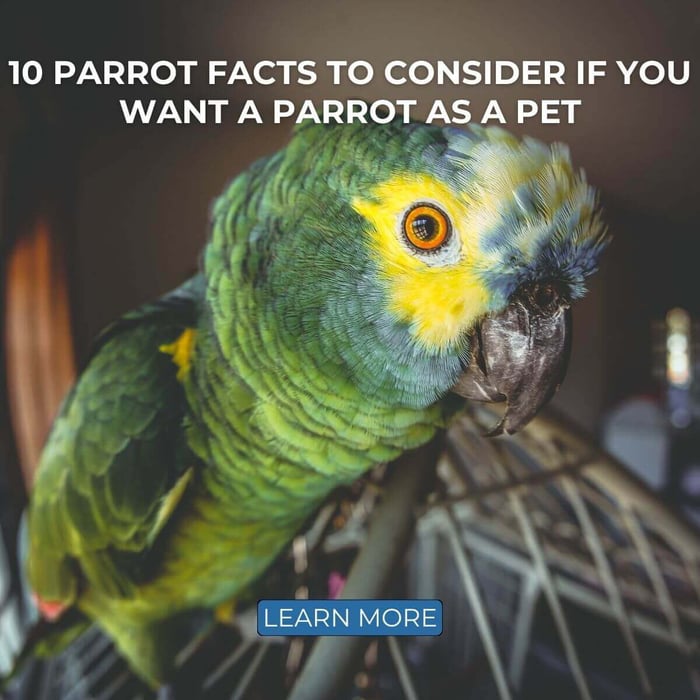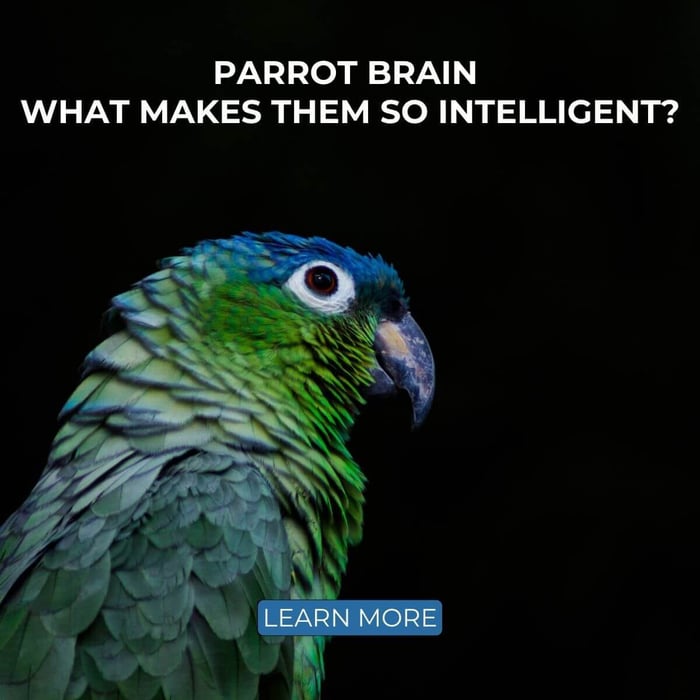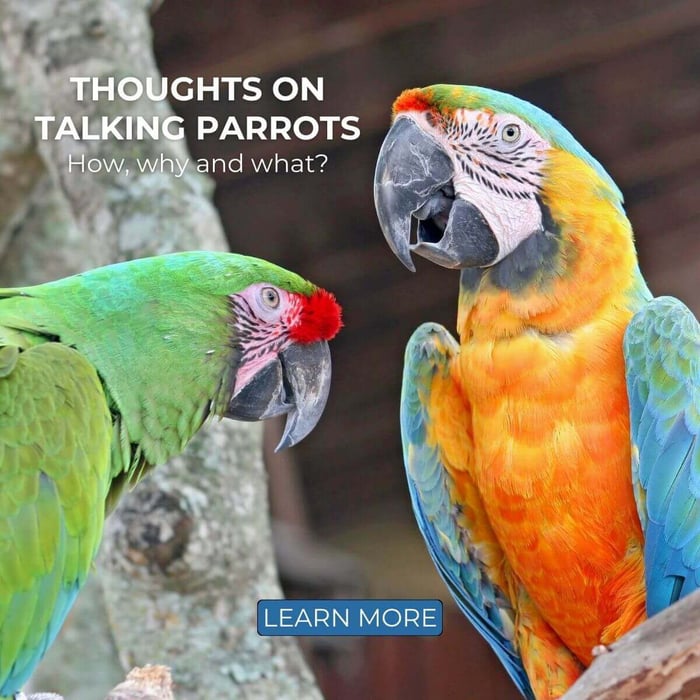The Smartest Parrot is an African Grey Called Griffin
When we think of intelligence in the animal kingdom, our minds often go to dolphins, chimpanzees, or even elephants. Rarely do we consider parrots, yet among these vibrant and vocal birds, there are extraordinary individuals like Griffin, the smartest parrot, whose cognitive abilities have astonished researchers and bird enthusiasts alike. Griffin works alongside Dr Irene Pepperberg on various research projects, and his latest achievement cements his status as one of the smartest parrots known to science.
A Remarkable Experiment
In a groundbreaking study, Griffin demonstrated his exceptional cognitive abilities by identifying a triangle from an obscure shape. The experiment involved a Kanizsa triangle, an optical illusion composed of three Pac-Man-like figures arranged in such a way that they suggest the shape of a triangle. Humans can easily recognize the triangle, but the feat is particularly impressive for a parrot, whose visual system differs significantly from ours. Griffin didn't just see three separate figures; he perceived the triangle they implied.
To many, this might not seem groundbreaking at first glance. However, it’s crucial to remember that Griffin is a parrot, not a human. His ability to process visual information in a manner similar to humans is a testament to his advanced cognitive functions. This study reveals that parrots like Griffin might process visual stimuli in ways previously thought unique to humans, highlighting the sophisticated nature of their perception.
Cognitive Convergence Across Evolution
Dr. Irene Pepperberg, who has spent years studying parrot intelligence, underscores the significance of these findings. "There are 300 million years of evolution that separate us," Pepperberg notes. "Just anatomically, Griffin’s brain is very different from ours. Despite that, these data suggest he is solving these critical survival problems – like avoiding predators and finding food – in ways that are very similar to those of humans."
Griffin’s ability to recognize occluded shapes not only showcases his intelligence but also provides valuable insights into cognitive processes across species. This experiment suggests that despite vast evolutionary distances, there may be convergent evolution in cognitive strategies used to solve survival-related problems.
Implications for Artificial Intelligence
The implications of Griffin’s cognitive abilities extend beyond the realm of animal behaviour and cognition. According to Nakayama, Edgar Pierce Professor of Psychology, this study holds valuable lessons for artificial intelligence (AI). "These algorithms can do astonishing things, but they’re very brittle in the sense that they can make terrible mistakes that you and I would never make. We’ve never really tested a human or a machine with this type of test… and if this animal with a relatively primitive brain can perform this task, there may be something here that needs to be explored."
Griffin’s performance in recognizing Kanizsa figures suggests that there might be fundamental cognitive processes that AI researchers can learn from. Understanding how a parrot’s brain processes complex visual information can offer new perspectives in developing more robust and adaptable AI systems.
Recognising Shapes: The Preparation
Before Griffin could be tested on his ability to recognize occluded shapes, he needed to learn to recognize shapes in general. Dr Pepperberg and her students embarked on this task by using wooden blocks to teach Griffin about shapes based on the number of corners they had. For example, when shown a square, Griffin eventually learned to respond by saying "four" to indicate the four corners.
Griffin’s training involved 3-D wooden shapes, but the occluded shapes he was tested on were printed on paper. His ability to recognize the Kanizsa shapes suggests a deep understanding of the relationship between these different representations. "He was able to recognize that this flat piece of paper represented the square block on which he was trained," Pepperberg explained.
Methodical Testing
The experiment was meticulously designed to ensure that Griffin’s responses were based on genuine recognition rather than rote learning. The tests involved shapes with 1 to 6 corners, presented in various colours and sizes. Importantly, no trial was repeated twice, ensuring that Griffin had to process each shape independently.
Griffin's Role in Advancing Avian Research
Griffin, the smartest parrot, continues to make significant contributions to the field of avian research. His cognitive abilities are not only fascinating but also invaluable in understanding the intelligence of parrots and other bird species. Researchers are now looking at Griffin's skills to gain deeper insights into the cognitive functions of birds, which could have far-reaching implications for various scientific disciplines.
Griffin's Communication Skills
Another area where Griffin, the smartest parrot, shines is in his communication skills. Griffin has been trained to understand and use a variety of words and phrases, demonstrating his ability to comprehend complex concepts. This skill set is particularly impressive because it shows that parrots are capable of learning and using human language in meaningful ways. By studying Griffin's communication abilities, researchers can explore how language and cognition are linked in avian species.
Keeping Smart Parrots Engaged
Griffin’s remarkable cognitive abilities serve as a reminder of the intelligence inherent in parrots and the need to keep these intelligent birds stimulated. Parrots are highly social and intelligent birds that require constant mental and physical engagement. To keep them healthy and happy, it is essential to provide them with a variety of activities and toys that challenge their minds.
Parrot Enrichment Strategies
To keep parrots like Griffin, the smartest parrot, mentally stimulated, it is crucial to offer a range of enrichment activities. Foraging & puzzle toys, preening and shredding toys can provide hours of engagement. These toys not only entertain but also encourage natural behaviours such as foraging and problem-solving, which are vital for their well-being.
Rotating Toys for Sustained Interest
One key aspect of maintaining a parrot’s interest in their toys is to rotate them regularly. Parrots can quickly lose interest in toys that remain the same day after day. By rotating their toys weekly, you can keep them engaged and curious. Novelty is a powerful tool in preventing boredom and ensuring that parrots remain mentally stimulated.
Griffin’s Legacy

Griffin’s achievements highlight the potential for advanced cognitive abilities in parrots, challenging our perceptions of animal intelligence. His ability to recognize occluded shapes not only fascinates researchers but also opens up new avenues for understanding cognition in non-human species.
Conclusion
Griffin’s story is a testament to the untapped cognitive potential of parrots. His ability to recognize complex shapes and solve visual puzzles places him among the smartest parrots known to science. Griffin’s collaboration with Dr Irene Pepperberg has not only advanced our understanding of parrot intelligence but also provided valuable insights that could inform fields such as artificial intelligence.
As we continue to study these remarkable birds, it is essential to remember the importance of mental stimulation for their well-being. By providing engaging toys and rotating them regularly, we can ensure that our feathered friends remain happy, healthy, and mentally sharp. Griffin’s legacy serves as an inspiring reminder of the incredible intelligence that can be found in the animal kingdom, urging us to look closer and appreciate the cognitive capabilities of even the most unexpected birds.




